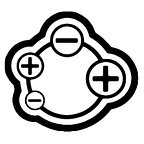Performance Pricing Basic Idea
In the previous post we compared different approaches how to find out if a part price is good & fair or not. We came to the conclusion that comparing the parts directly would be a superior approach. This post will focus on how information about parts can tell us if we have a good price or not.
The basic idea is pretty simple: If we can specify a couple of properties that describe our parts, then we should be in a position to relate these properties somehow to the price. When we do this, we will see what the “average” costs of a product with a set of given properties are.
Let’s use a simple example for easier understanding. The following picture shows a collection of 6 properties for a couple of products.
The properties of our product we are interested in are: Price, Quantity, Weight, Diameter, Length and Width.
How could we now figure out, for example, how Weight influences the price of our parts?
A simple first approach is, to sum all the Prices. Sum all the Weights and then divide both. This gives us “Costs per 1 Weight unit”. In our example this is: 233736,39 (Sum of Price) / 55587,957 (Sum of Weight) = 4,20 (Costs per 1 Weight unit). That’s the simple average price of a 1 weight unit. The weight unit could be kg, gramme, etc.
Now let’s do the same with Length. 233736,39 (Sum of Price) / 23120 (Sum of Length) = 10,11 (Costs per 1 Length unit). This tells us, that 1 Length unit is much more expensive than 1 Weight unit.
We could now continue to do the same with the other properties to see how these impact on the price. But, does that make sense?
No it doesn’t. What does it mean if we say “1 Length unit” cost in average 10,11? How does “1 Length unit” look like? Is it big, or small? Is it light or heavy? No idea, because we can’t tell what it is.
“Wait!” some might say, “you have to take Weight and Length together into account at the same time”. Yes, that would help to better get an idea what “1 Length unit” is about. If it’s only 1g is must be pretty small. If it’s 1t it must be very big.
Ok, taking these two properties into account at the same time seems to give us much better information on how such a part looks like. Now, how do we take both properties into account at the same time?
We could sum both and again, calculate an average. That would give us: 10,11 * ((Costs per 1 Length unit) +4,20 (Costs per 1 Weight unit)) / 2 = … ? The question is, what would be the outcome? The pure mathematical approach gives: (5.055 l + 2.1 w)/(lw) where w = weight and l = length. Nonetheless, what does this tell us?
I could go on with some different approaches like using the median instead of average etc. but this won’t bring us any further too.
The problem of the shown way is, that we try to calculate some “Price per …” using the given properties. But what we are really interested in is not “Price per 1 … unit” but “Price per product with the given properties”.
If we could somehow calculate the product price from the given properties, that would help us a lot because then we could compare “Actual Price” (the number from our Excel sheet) vs. “Calculated Price” (the number we don’t have a clue how to calculate at the moment). Because, comparing price with price is easy.
And the basic idea behind “Performance Pricing” is to find a formula that enables us to calculate a “Shouldcost” (that’s the term used in the industry even we often talk about price) based on given properties.
The next post will show how this can be made.
